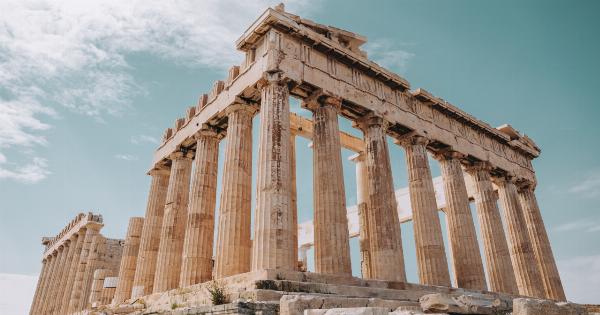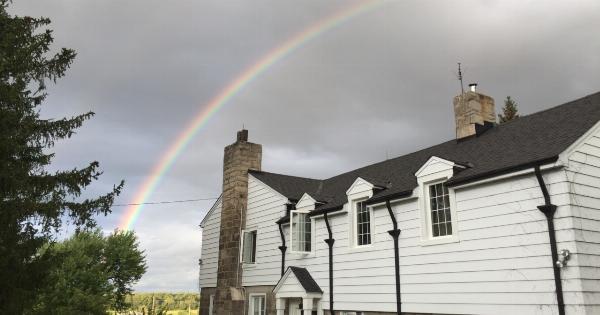Eroticism has always been a subject of fascination and controversy in Western culture. Throughout history, societies have grappled with the exploration and expression of human desires, often veiled under societal norms and moral constraints.
This article delves into the evolution of eroticism in the West, tracing its roots from ancient civilizations to modern times.
Ancient Greece: Embodiment of Sensuality
In ancient Greece, eroticism was celebrated as an integral part of life. The Greeks believed in the power of physical attraction and regarded it as a divine force.
Famous artworks, such as the statue of Aphrodite of Knidos, epitomized the beauty of the human form and laid the foundation for Western notions of eroticism.
Roman Empire: Carnal Desires and Decadence
During the Roman Empire, eroticism took on a more explicit and hedonistic tone. Sexual acts were portrayed more openly in frescoes, mosaics, and sculptures, reflecting the empire’s indulgence in carnal pleasures.
Public displays of erotic artwork were common, and brothels thrived in ancient Rome. However, the rise of Christianity marked a significant shift in societal attitudes towards eroticism.
The Rise of Christianity: Repression and Guilt
With the advent of Christianity, Western society underwent a transformation in its outlook on eroticism. The Church viewed sexuality as a sinful desire that needed to be repressed to attain spiritual purity.
Erotic art and literature were seen as morally corrupt and were censored or destroyed. This period of repression lasted for centuries, leading to a sense of guilt and shame surrounding human desires.
The Renaissance: Reawakening of the Senses
The Renaissance brought about a renewed interest in the human body and its sensuality. Artists such as Leonardo da Vinci and Michelangelo rediscovered the beauty of the naked form, and paintings and sculptures became more naturalistic.
Eroticism found its way back into art, albeit in a more refined and idealized manner. The concept of courtly love also emerged during this period, blending eroticism with romance and chivalry.
The Enlightenment: Reason and Eroticism
The Enlightenment of the 17th and 18th centuries embraced rationality and individual liberty. This era witnessed a challenging of traditional moral values, and eroticism began to be discussed openly in philosophical circles.
Thinkers like the Marquis de Sade pushed the boundaries of acceptable sexual subject matter, exploring themes of sadomasochism and unconventional desires in their works.
Victorian Era: Prudishness and Hidden Desires
The Victorian era, in contrast to the liberal attitudes of the Enlightenment, was characterized by prudishness and the obsession with propriety. Eroticism was considered taboo, and discussions around sexuality were repressed.
However, this period also witnessed a proliferation of erotic literature and artwork produced clandestinely, indulging the hidden desires of the time.
20th Century: Embracing Sexual Liberation
As the 20th century dawned, Western society experienced a major shift in attitudes towards eroticism. The rise of feminism, the sexual revolution, and the advent of mass media all contributed to a more open dialogue about sexuality.
Artists like Pablo Picasso and Georgia O’Keeffe explored erotic themes in their artwork, challenging societal norms and redefining the boundaries of acceptability.
Modern Times: Eroticism in Popular Culture
In today’s digital age, eroticism is readily accessible through various mediums, from movies and music to literature and the internet.
Society has become more accepting of diverse sexual expressions, and discussions around topics such as BDSM, polyamory, and LGBTQ+ relationships have entered the mainstream. However, controversies and debates still exist, as the boundaries of eroticism continue to be explored and tested.
The Taboo Nature of Eroticism
Despite the progress made in recent decades, eroticism remains a taboo subject in many aspects of Western culture.
Society grapples with conflicting views on appropriate depictions of sexuality, the objectification of the human body, and the impact of pornography on relationships and self-image. Nonetheless, the exploration of eroticism, when consensual and respectful, can be a source of self-discovery, creativity, and pleasure for individuals.
The Future of Erotic Expression
As society continues to evolve, the topic of eroticism will undoubtedly remain a subject of fascination and controversy. It is essential to foster open dialogue, respect, and consent when exploring and expressing our desires.
Embracing the diverse expressions of eroticism can lead to a more inclusive and understanding society, where individuals are free to explore and celebrate their sexuality within the boundaries of consent and mutual respect.































